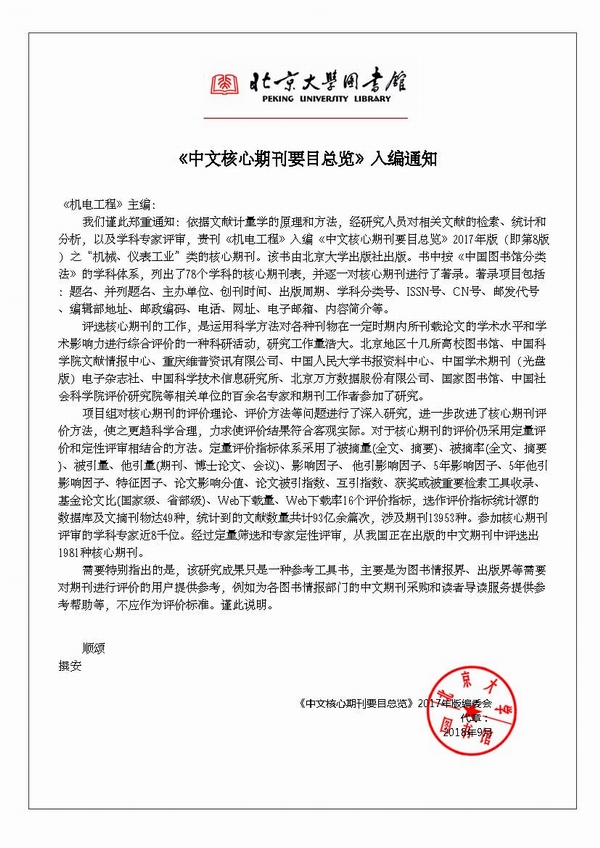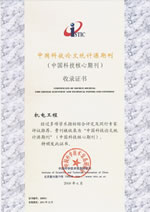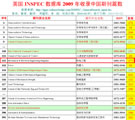
Founded in 1971 >
Chinese Sci-tech Core Periodicals >
British Science Abstracts (SA, INSPEC) Indexed Journals >
United States, Cambridge Scientific Abstract: Technology (CSA: T) Indexed Journals >
United States, Ulrich's Periodicals Directory(UPD)Indexed Journals >
United States, Cambridge Scientific Abstract: Natural Science (CSA: NS) Indexed Journals >
Poland ,Index of Copernicus(IC) Indexed Journals >
International Standard Serial Number:
ISSN 1001-4551
Sponsor:
Zhejiang University;
Zhejiang Machinery and Electrical Group
Edited by:
Editorial of Journal of Mechanical & Electrical Engineering
Chief Editor:
ZHAO Qun
Vice Chief Editor:
TANG ren-zhong,
LUO Xiang-yang
Tel:
86-571-87041360,87239525
Fax:
86-571-87239571
Add:
No.9 Gaoguannong,Daxue Road,Hangzhou,China
P.C:
310009
E-mail:
meem_contribute@163.com
Abstract: Aiming at the cutting condition monitoring in ultraprecision machining, the test method of contact detection and identification using acoustic emission technology was studied. Firstly, a lead zirconium titanate piezoceramic sensor with a resonance frequency of 1 MHz was installed close to the cutting point. Then, the acoustic emission analysis unit amplification and 100kHz high pass filter were used to process the background noise, and the contact limit between cutting edge and workpiece was studied to achieve accurate detection of cuttingedge position. Fiually, to identify the cutting state, the change of acoustic emission signal caused by the change of cutting state was also monitored. The results show that: (1) In contact detection test, when the cutting speed is 60m/min, the contact between the cutting edge and the workpiece can be detected at a cutting depth of 10 nm; (2) In the cutting state identification test, the acoustic emission signal waveform can identify the minor changes occurring during surface machining, and the average value of acoustic emission is highly positively correlated with the cutting speed, and the total energy of acoustic emission is proportional to the length of the contact arc. These results confirm the feasibility of acoustic emission technology for cutting condition monitoring.
Key words: ultra-precision cutting; acoustic emission(AE); cutting state monitoring; contact detection: cutting tool
XU Zhong-you, ZHANG Ting. Experimental research on ultra-precision cutting condition monitoring based on acoustic emission[J].Journal of Mechanical & Electrical Engineering, 2021,38(8):1070-1075.








